Best Surface for students 2024: The perfect PC for heading back to school or college
Microsoft's Surface PCs are stylish, functional, and powerful.
Back-to-school season always comes around faster than expected, and the accompanying shopping list seems to grow every year. If a new laptop is part of your plan, whether for a college or high school student, the choices can be overwhelming. There are many great Windows laptops out there, with a wide range of performance hardware, display sizes, features, and prices.
Microsoft's Surface brand is home to some of the finest PC hardware. Looking at all of the best Surface PCs, there's a standout aesthetic that is pleasant to look at and to use. Inside, the newest Surface PCs — like the Surface Laptop 7 and Surface Pro 11 — feature Qualcomm's Snapdragon X chips for Copilot+, granting access to advanced AI tools in Windows 11.
There are Surface PCs for all types of users, but I've included only the top options for both high school and college students in this list.
The quick list
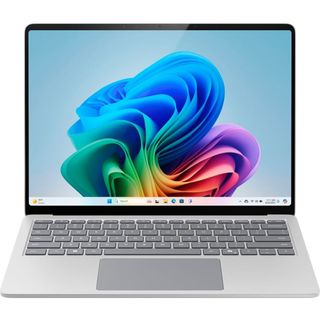
Best overall
The Surface Laptop 7, available in 13.8- and 15-inch sizes, is the most well-rounded PC in the lineup. It'll suit most students who need awesome Snapdragon X performance, true all-day battery life, a haptic touchpad, and a high-res touch display.
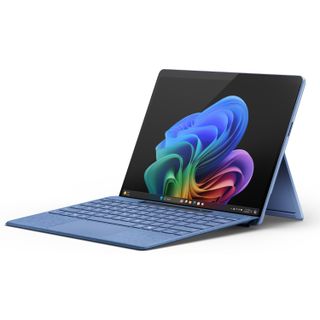
Best 2-in-1
The Surface Pro 11 is powered by Qualcomm's Snapdragon X chips for Windows on ARM. It's powerful, has great battery life, and its 2-in-1 design is the most versatile of the bunch. This is the right pick if you enjoy splitting time between a notebook and a tablet.
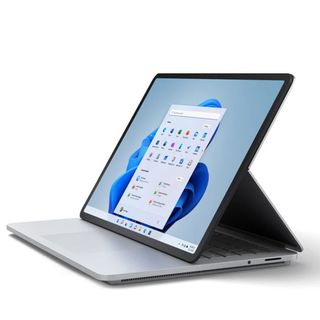
Best performance
The Surface Laptop Studio 2 has a rare pull-forward design that's great for creators, but it's just as comfortable acting as a clamshell. Inside is Intel's 13th Gen Core i7-13700H CPU, with your choice of NVIDIA RTX and RTX Ada discrete GPUs.
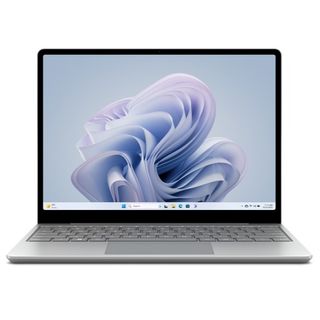
Best for high school
The portable and (relatively) affordable Laptop Go 3 is my favorite PC to recommend to high school students. It offers snappy Intel Core performance, a premium and compact design, and a great keyboard.
Our favorite Surface PCs for students
Why you can trust Windows Central
With the quick list out of the way, we can now jump into a more detailed breakdown of each Surface PC that I deem worthy for use by students heading back to high school or college. We've reviewed all of these PCs, and I've included highlights from our testing, specs, and pricing for each section.
Best overall for most students
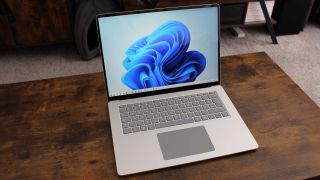
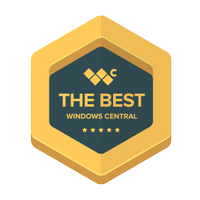
Specifications
Reasons to buy
Reasons to avoid
For me, picking the best Surface for most students is easy. You can look no further than the Surface Laptop 7, which is essentially Microsoft's answer to the Apple MacBook Air. It's a slim, light, and portable Windows PC with a contemporary design that looks great amongst a crowd and is perfectly capable of most student tasks and workflows.
It's available in two sizes — 13.8 and 15 inches — to better suit your needs. Both have a 3:2 aspect ratio, 120Hz dynamic refresh rate, touch, Dolby Vision IQ support, and a resolution that works out to 201 pixels per inch (PPI). That's 2304x1536 for the 13.8-inch model and 2496x1664 for the 15-inch model.
The Surface Laptop 7 is powered by Qualcomm's Snapdragon X ARM64 Systems-on-Chip (SoC); the smaller model has X Plus and X Elite (X1E-80) options, while the 15-inch model sticks with the X Elite only. The chips, which run Windows on ARM, can be paired with 16GB or 32GB of LPDDR5x RAM, as well as up to a 1TB M.2 PCIe 4.0 NVMe SSD that can be upgraded after purchase.
Qualcomm's chips come with a Neural Processing Unit (NPU) powerful enough to give it access to Copilot+ features in Windows 11. Running at 45 TOPS, it allows for things like local image and text creation, live translation and captioning, advanced Windows Studio Effects, and more. It even has an Auto Super Resolution feature that can intelligently boost performance in games.
Windows Central Senior Editor Zac Bowden reviewed the Surface Laptop 7 with an X Elite (X1E-80), stating:
"This result trades blows with the Apple M3 in the MacBook Air and MacBook Pro. It easily beats the Surface Laptop Studio 2 as well, which was previously Microsoft's most powerful Surface on the market. It's also well ahead of the Intel Core Ultra 9 found in the Samsung Galaxy Book4 Ultra, which only scores 2,391 in single-core and 13,305 in multi-core. All this is to say the Surface Laptop 7 with Snapdragon X Elite is a bit of a beast when it comes to performance."
Bowden also saw nearly 19 hours of battery life in PCMark 10's Modern Office rundown. Even in real-world use, you can still expect to get through a full day of studies without requiring a charge. Combine all this with a new Sensel haptic touchpad, thinner display bezels, and some other refinements, and you have one great PC that starts at about $1,000.
Read our in-depth Surface Laptop 7 review
Best 2-in-1 for students
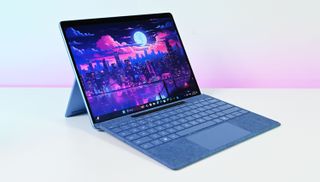

Specifications
Reasons to buy
Reasons to avoid
The Surface Pro 11 is better than ever, and it's the most versatile option in Microsoft's lineup. If you're a student who enjoys working with a clamshell laptop and a tablet, this one is easy for me to recommend.
Windows Central Editor-in-Chief Daniel Rubino remarked that "Microsoft's original vision for the Surface Pro is finally a reality" in his Surface Pro 11 review, and it's all thanks to the new Qualcomm Snapdragon X chips for Windows on ARM. He tested the X Elite (X1E-80) SoC, ultimately discovering an abundance of power with 10+ hours of real-world battery life. Rubino goes on to say:
"What matters to me, as someone who uses Surface Pro as their regular PC for home and travel use, is that I can use it for its intended purpose. That includes Office, OneNote, web, Slack, Telegram, WhatsApp, Spotify, watching movies, YouTube, Discord, Adobe Photoshop Elements 2024, Google Meet, Skype, Outlook, Twitter/Threads, Copilot … Not only do all these apps run on Surface Pro 11, it is the fastest experience I’ve had in such a form factor and runs better than many of my Intel and AMD laptops and gets better battery life."
The Pro 11, for the first time, has an optional OLED display for improved color and contrast. It hits up to 550 nits of brightness, it supports VESA DisplayHDR 600, Dolby Vision, and it manages 100% sRGB and 96% DCI-P3 color reproduction. It supports inking, though the Surface Slim Pen 2 is sold separately.
Also new to the Pro 11 is the optional Pro Flex keyboard. It takes the standard Pro keyboard design and adds wireless connectivity, a built-in battery, a haptic touchpad, and a more rigid base for easier use on your lap. It's also sold separately, but keep in mind that you can use older Surface Pro keyboards to save some money.
Prices start at about $1,000 for a Surface Pro 11 with a Snapdragon X Plus chip, 16GB of RAM, LCD display, and 256GB SSD.
Read our in-depth Surface Pro 11 review
Best performance for students
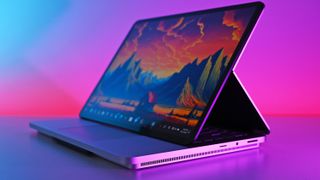

Specifications
Reasons to buy
Reasons to avoid
The Surface Laptop Studio 2 looks like a mix between the retired Surface Book and the latest Surface Laptop. Its notebook design hides a pull-forward display, which when enabled results in an easel-like setup for drawing and note-taking. It might be heavier and thicker than the other options here, but its design and performance hardware make it ideal for students entering studies for engineering, art, design, and beyond.
The Laptop Studio 2 has a haptic touchpad and a comfortable keyboard, the audio is excellent despite a lack of any apparent speaker grilles, and the 3MP webcam does a decent job. An IR sensor is included for Windows Hello. Microsoft included an Intel Gen3 Movidius 3700VC VPU AI accelerator, which is a very fancy way of saying "NPU." It helps with Windows Studio Effects for a better webcam picture.
The 14.4-inch touch display has a 2400x1600 resolution, a 120H refresh rate, a taller 3:2 aspect ratio, Dolby Vision IQ support, and DisplayHDR 400. It supports inking, and it can hit up to 500 nits brightness. In our testing, it managed 100% sRGB, 80% AdobeRGB, and 88% DCI-P3 color reproduction.
As the most powerful Surface on the market, the Laptop Studio 2 ships with several discrete NVIDIA RTX GPU options. Here's what Editor-in-Chief Daniel Rubino had to say in his review:
"The core new feature of Surface Laptop Studio 2 is the increased performance, which, as noted earlier, contributes to its bulkier size and heavier weight. Microsoft claims this laptop is twice as powerful as the previous one, and going by my benchmarks, the company's claim holds."
As for battery life, the heavy performance hardware resulted in nearly nine hours of runtime through PCMark 10's Modern Office rundown. That number comes down a bit in real-world usage, but it's still well in line with other laptops running discrete graphics and high-res touch displays.
The Surface Laptop Studio 2 starts at about $2,200, reserving it for college and grad students who have a clear idea of their major and who need a corresponding powerful laptop.
Read our in-depth Surface Laptop Studio 2 review
Best for high school students
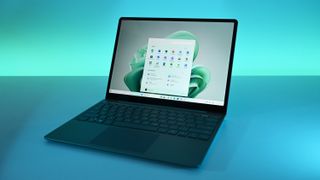
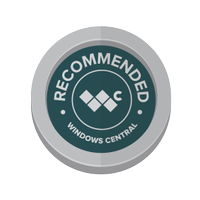
Specifications
Reasons to buy
Reasons to avoid
The Surface Laptop Go 3 is Microsoft's budget-friendly laptop line, featuring a 12.4-inch touch display with thin bezels, an excellent keyboard and trackpad, a premium aluminum and polycarbonate chassis, and a Windows Hello fingerprint reader for quick secure login.
The Surface Laptop Go 3 is excellent for high-school students because it's portable, it's light, and the price means you won't be afraid to throw it around in your backpack. It uses premium materials in all the places you're most likely to be touching, including the keyboard deck and laptop lid, but has a polycarbonate underside which means it's more durable to scuffs and bangs.
In Senior Editor Zac Bowden's Surface Laptop Go 3 review, he noted:
"Performance on the Surface Laptop Go 3 is overall actually very good. Even with its last-gen Intel Core i5, I was happy with the speed and efficiency of this laptop. In daily tasks, the Surface Laptop Go 3 didn't even blink. It was able to handle web browsing, email, listening to music on Spotify, watching videos on YouTube, and even a bit of light Photoshop work."
I also like this laptop because it's a great option for writing essays or reports, creating PowerPoint presentations, joining virtual classes, as well as kicking back with a movie or listening to music. You can find the Surface Laptop Go 3 with a Core i5 CPU, 8GB of RAM, and 256GB SSD starting at about $800.
Read our in-depth Surface Laptop Go 3 review
How to pick the best Surface as a student
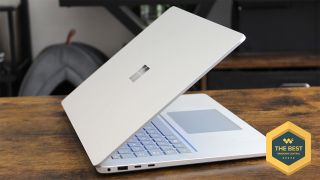
Surface PCs generally last a long time, and they also hold their value as long as they're well cared for. You might pay more upfront for Microsoft's laptops, but there's a good chance you'll use it for years to come (and maybe even sell it when you upgrade). I gifted my old Surface Pro 4 — released in 2015 — to my father-in-law, and he still uses it daily.
The Surface PCs I've collected in this list represent the latest hardware in each category. The Surface Pro 11 and Surface Laptop 7 were the spearheads for the awesome new Copilot+ PCs, and they should prove to be the two most popular options for anyone headed back to school. These AI PCs have access to Copilot+ AI features in Windows 11, and their Qualcomm Snapdragon X chips deliver unreal performance and battery life. Unless you want to spend less on something like the Laptop Go 3, I recommend the Pro 11 for tablet lovers and the Laptop 7 for everyone else.
Students entering a specialized study might require more power. In that case, the Surface Laptop Studio 2 with NVIDIA RTX and RTX Ada discrete GPUs should be a top choice. Just watch out for the price tag.
What about buying a used Surface?
Buying a brand-new laptop for school is always tempting, but it's certainly not necessary. You can save a lot of money by shopping secondhand, and Surface products are generally quite popular in the used market. However, there are some risks involved.
If you're buying from a private seller, you want to be sure that the device is in good working order. You won't get any guarantees beyond what the seller tells you, so it's up to you to ensure you're getting something worth the money. I wrote a separate guide with 11 top tips to help you buy a used laptop that can help.
Many retailers also offer refurbished programs where you can find used Surface PCs. Newegg, for example, has plenty of listings for used Surface, and Microsoft has its own official refurb program with plenty of options. Compared to buying locally, you get some extra assurances to protect your purchase.
Get the Windows Central Newsletter
All the latest news, reviews, and guides for Windows and Xbox diehards.

Cale Hunt brings to Windows Central more than eight years of experience writing about laptops, PCs, accessories, games, and beyond. If it runs Windows or in some way complements the hardware, there’s a good chance he knows about it, has written about it, or is already busy testing it.
- Zac BowdenSenior Editor
-
dkstrauss Great advice on all levels Zac, but what do you do when your grandchild has an iPhone, iPad, and asks why aren't we getting a MacBook Air?Reply
And NO all you flamers, it's not an answer to say "because I'm paying..." -
ShinyProton My issue with the article is not even whether or not students have Apple hardware for mobility.Reply
It's more like "Why buy an overpriced or under-spec Surface?".
After owning Surface several Surface devices, Microsoft pulled me away from their lineup with the 9 series. All overpriced or with inferior specs.
I got a superior 2-in-1 Lenovo computer for cheaper with superior hardware. And more recently, I bought a Robo & Kala 2-in-1 ARM based (8cx Gen 3) for 1/3 the price of the equivalent Surface Pro 9.
Seriously, you really need to be a die-hard Surface fan to waste money on their hardware. -
Geoff-37 Reply
I didn't get you a MacBook Air, because I'm your GrandParent, its 2024, and the Macbook Air still doesn't have a touchscreen.dkstrauss said:Great advice on all levels Zac, but what do you do when your grandchild has an iPhone, iPad, and asks why aren't we getting a MacBook Air?
And NO all you flamers, it's not an answer to say "because I'm paying..." -
Geoff-37 Reply
The Surface Laptop has one inexcusable flaw: The screen doesn't lay flat.Windows Central said:If you're heading back to school, you'll probably need a new PC for the new semester and beyond. Here are the best Microsoft Surface PCs for your studies.
Best Surface for students 2023: The perfect PC for heading back to school or college : Read more
That makes it very cumbersome to draw on the screen. Pinch-to-Zoom and basic finger selection or drawing is OK, but pen input is not. And that's going to be very irritating, sooner or later.
So get a Surface Pro, or look at Dell. HP or Lenovo (or the others) to find a 180-degree hinge (or perhaps a 360-degree hinge).